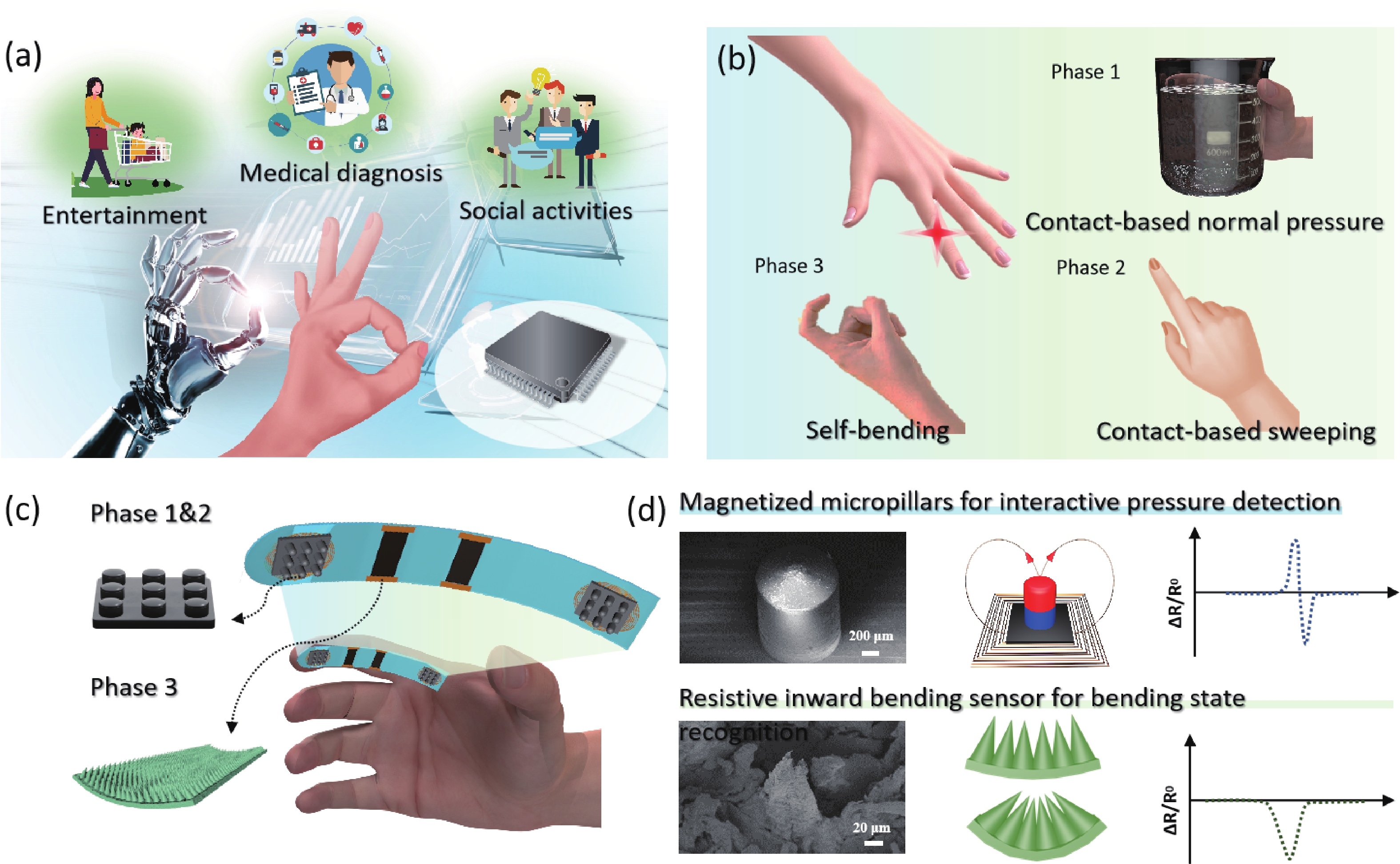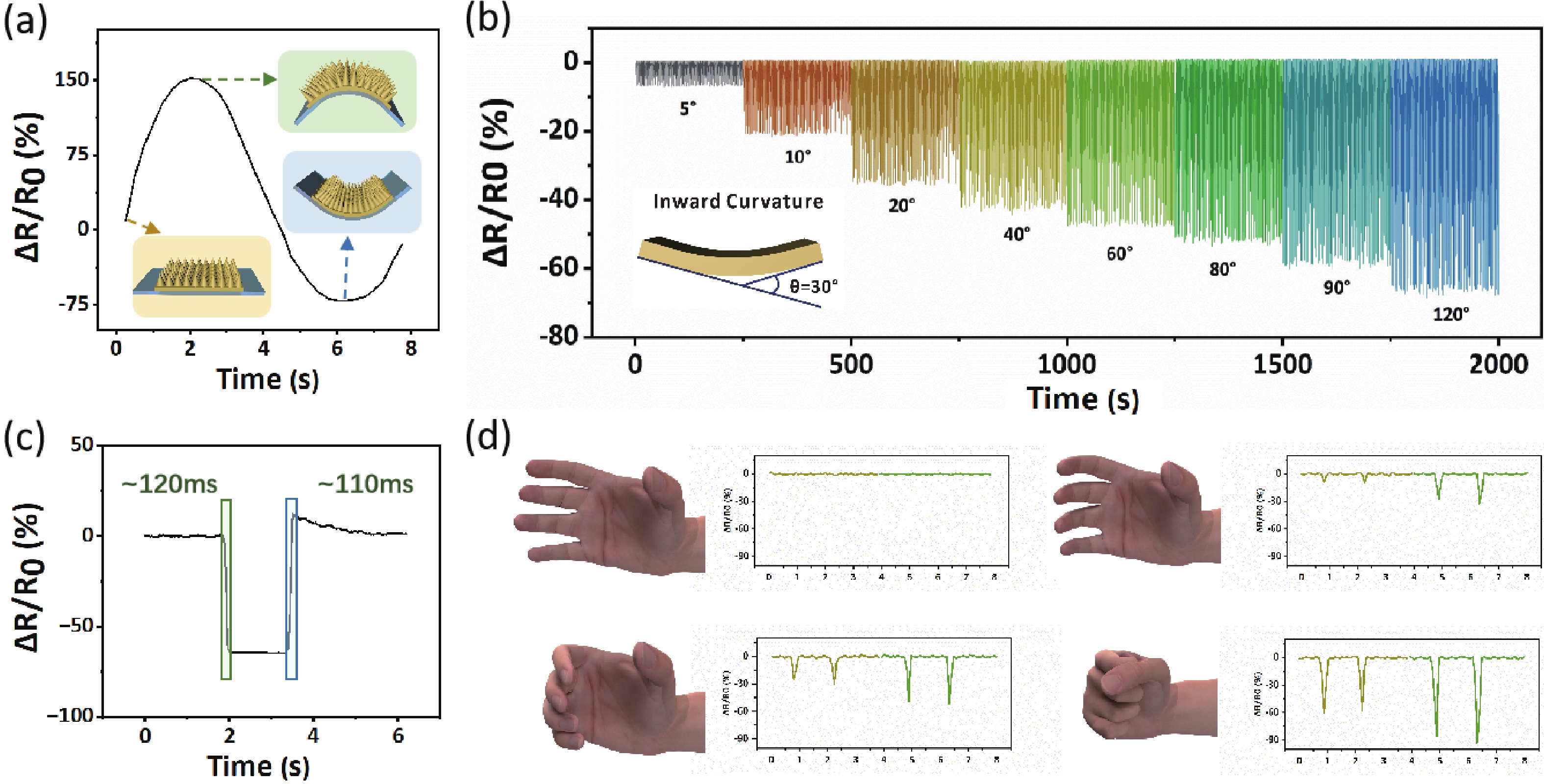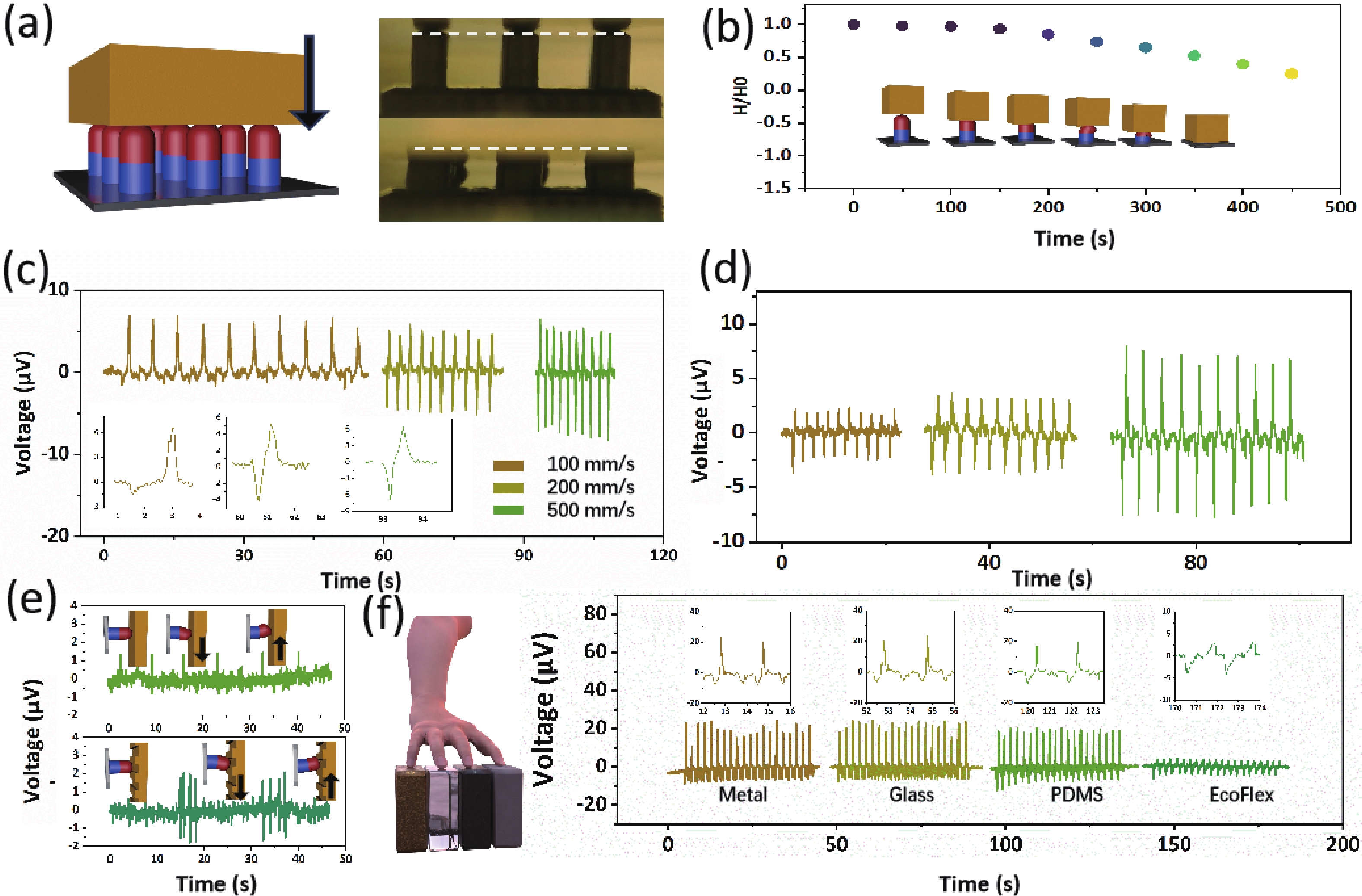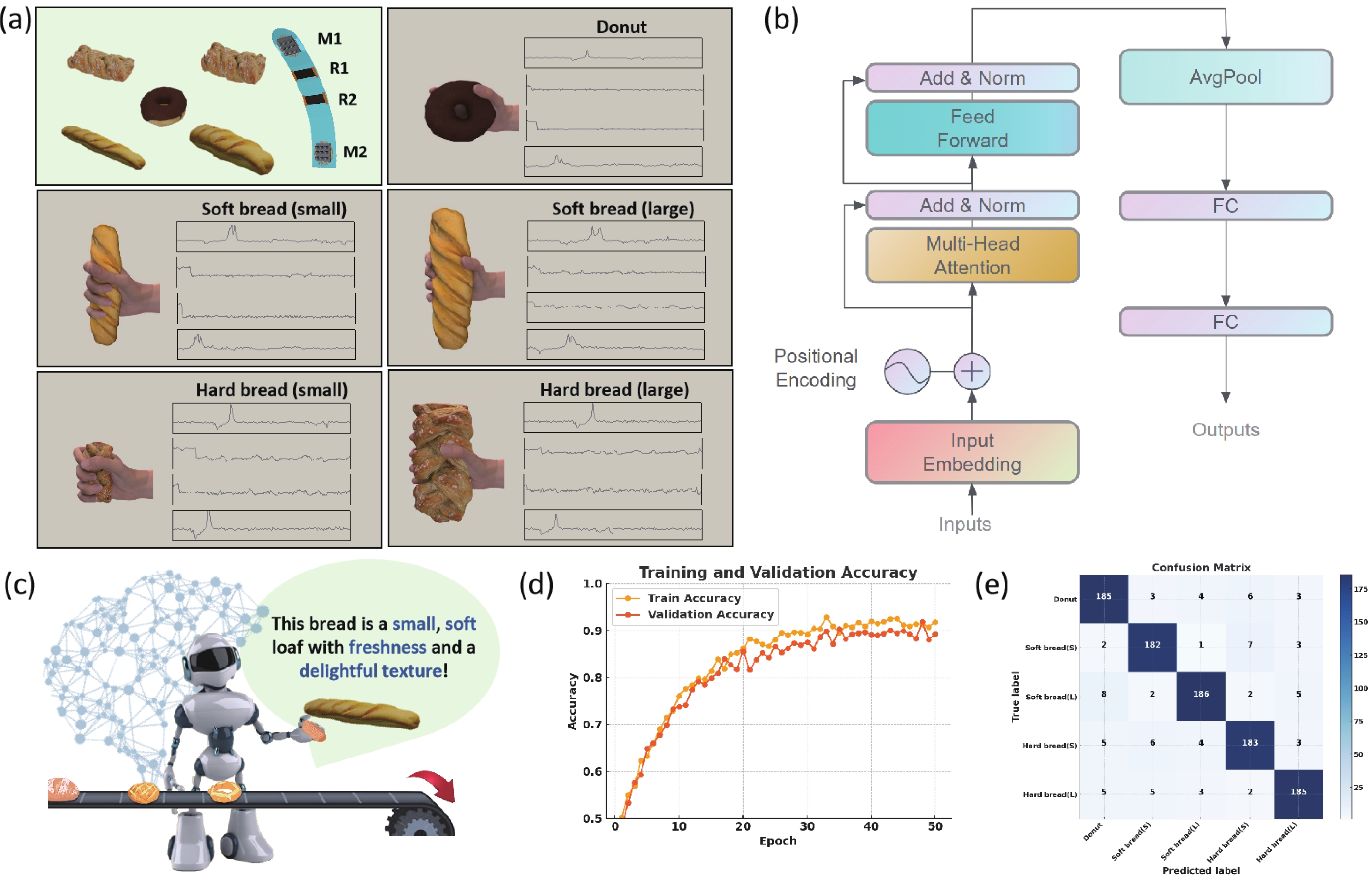| Citation: |
Ziyi Dai, Mingrui Wang, Yu Wang, Zechuan Yu, Yan Li, Weidong Qin, Kai Qian. A smart finger patch with coupled magnetoelastic and resistive bending sensors[J]. Journal of Semiconductors, 2025, 46(1): 012601. doi: 10.1088/1674-4926/24080027
****
Z Y Dai, M R Wang, Y Wang, Z C Yu, Y Li, W D Qin, and K Qian, A smart finger patch with coupled magnetoelastic and resistive bending sensors[J]. J. Semicond., 2025, 46(1), 012601 doi: 10.1088/1674-4926/24080027
|
A smart finger patch with coupled magnetoelastic and resistive bending sensors
DOI: 10.1088/1674-4926/24080027
CSTR: 32376.14.1674-4926.24080027
More Information-
Abstract
In the era of Metaverse and virtual reality (VR)/augmented reality (AR), capturing finger motion and force interactions is crucial for immersive human-machine interfaces. This study introduces a flexible electronic skin for the index finger, addressing coupled perception of both state and process in dynamic tactile sensing. The device integrates resistive and giant magnetoelastic sensors, enabling detection of surface pressure and finger joint bending. This e-skin identifies three phases of finger action: bending state, dynamic normal force and tangential force (sweeping). The system comprises resistive carbon nanotubes (CNT)/polydimethylsiloxane (PDMS) films for bending sensing and magnetoelastic sensors (NdFeB particles, EcoFlex, and flexible coils) for pressure detection. The inward bending resistive sensor, based on self-assembled microstructures, exhibits directional specificity with a response time under 120 ms and bending sensitivity from 0° to 120°. The magnetoelastic sensors demonstrate specific responses to frequency and deformation magnitude, as well as sensitivity to surface roughness during sliding and material hardness. The system’s capability is demonstrated through tactile-based bread type and condition recognition, achieving 92% accuracy. This intelligent patch shows broad potential in enhancing interactions across various fields, from VR/AR interfaces and medical diagnostics to smart manufacturing and industrial automation. -
References
[1] Yin R Y, Wang D P, Zhao S F et al. Wearable sensors-enabled human-machine interaction systems: from design to application. Adv Funct Mater, 2021, 31, 2008936 doi: 10.1002/adfm.202008936[2] Si Y Y, Chen S J, Li M, et al. Flexible strain sensors for wearable hand gesture recognition: from devices to systems. Adv Intell Syst, 2022, 4, 2100046 doi: 10.1002/aisy.202100046[3] Ji B W, Wang X Q, Liang Z K, et al. Flexible strain sensor-based data glove for gesture interaction in the metaverse: a review. Int J Hum, 2023, 1 doi: 10.1080/10447318.2023.2212232[4] Jiang C P, Zhang Z, Pan J, et al. Finger-skin-inspired flexible optical sensor for force sensing and slip detection in robotic grasping. Adv Mater Technol, 2021, 6, 2100285 doi: 10.1002/admt.202100285[5] Fang H, Guo J J, Wu H. Wearable triboelectric devices for haptic perception and VR/AR applications. Nano Energy, 2022, 96, 107112 doi: 10.1016/j.nanoen.2022.107112[6] Lee K T, Chee P S, Lim E H, et al. Development of flexible glove sensors for virtual reality (VR) applications. Mater Today Proc, 2023 doi: 10.1016/j.matpr.2023.04.423[7] Constant N, Cay G, Ravichandran V, et al. Data analytics for wearable IoT-based telemedicine. Wearable Sensors Amsterdam: Elsevier, 2021, 357 doi: 10.1016/B978-0-12-819246-7.00013-9[8] Gratz-Kelly S, Philippi D, Fasolt B, et al. Gesture and force sensing based on dielectric elastomers for intelligent gloves in the digital production. Tm-Technisches Messen, 2024, 91, 195 doi: 10.1515/teme-2024-0003[9] Luo Y, Wang Z H, Wang J Y, et al. Triboelectric bending sensor based smart glove towards intuitive multi-dimensional human-machine interfaces. Nano Energy, 2021, 89, 106330 doi: 10.1016/j.nanoen.2021.106330[10] Brook N, Mizrahi J, Shoham M, et al. A biomechanical model of index finger dynamics. Med Eng Phys, 1995, 17, 54 doi: 10.1016/1350-4533(95)90378-O[11] Maas R, Leyendecker S. Structure preserving optimal control simulation of index finger dynamics. The 1st Joint International Conference on Multibody System Dynamics, 2010[12] Asakawa D S, Dennerlein J T, Jindrich D L. Index finger and thumb kinematics and performance measurements for common touchscreen gestures. Appl Ergon, 2017, 58, 176 doi: 10.1016/j.apergo.2016.06.004[13] Chansri C, Srinonchat J. Utilizing gramian angular fields and convolution neural networks in flex sensors glove for human–computer interaction. IEEE Trans Hum Mach Syst, 2024, 54, 475 doi: 10.1109/THMS.2024.3404101[14] Rocha R P, Lopes P A, de Almeida A T, et al. Fabrication and characterization of bending and pressure sensors for a soft prosthetic hand. J Micromech Microeng, 2018, 28, 034001 doi: 10.1088/1361-6439/aaa1d8[15] Yuan Y B, Xu H C, Zheng W H, et al. Bending and stretching-insensitive, crosstalk-free, flexible pressure sensor arrays for human-machine interactions. Adv Mater Technol, 2024, 9, 2301615 doi: 10.1002/admt.202301615[16] Zhu B, Xu Z J, Liu X, et al. High-linearity flexible pressure sensor based on the gaussian-curve-shaped microstructure for human physiological signal monitoring. ACS Sens, 2023, 8, 3127 doi: 10.1021/acssensors.3c00818[17] Lin Q P, Huang J, Yang J L, et al. Highly sensitive flexible iontronic pressure sensor for fingertip pulse monitoring. Adv Healthcare Mater, 2020, 9, 2001023 doi: 10.1002/adhm.202001023[18] Das P S, Chhetry A, Maharjan P, et al. A laser ablated graphene-based flexible self-powered pressure sensor for human gestures and finger pulse monitoring. Nano Res, 2019, 12, 1789 doi: 10.1007/s12274-019-2433-5[19] Fu X Y, Li L, Chen S, et al. Knitted Ti3C2Tx MXene based fiber strain sensor for human–computer interaction. J Colloid Interface Sci, 2021, 604, 643 doi: 10.1016/j.jcis.2021.07.025[20] Shu Q, Xu Z B, Liu S, et al. Magnetic flexible sensor with tension and bending discriminating detection. Chem Eng J, 2022, 433, 134424 doi: 10.1016/j.cej.2021.134424[21] Li Z D, Hu F M, Chen Z M, et al. Fiber-junction design for directional bending sensors. NPJ Flex Electron, 2021, 5, 4 doi: 10.1038/s41528-021-00102-2[22] Bai J, Gu W, Bai Y Y, et al. Multifunctional flexible sensor based on PU-TA@MXene janus architecture for selective direction recognition. Adv Mater, 2023, 35, 2302847 doi: 10.1002/adma.202302847[23] Bin Choi S, Noh T, Jung S B, et al. Stretchable piezoresistive pressure sensor array with sophisticated sensitivity, strain-insensitivity, and reproducibility. Adv Sci, 2024, 2405374 doi: 10.1002/advs.202405374[24] He J, Zhou R H, Zhang Y F, et al. Strain-insensitive self-powered tactile sensor arrays based on intrinsically stretchable and patternable ultrathin conformal wrinkled graphene-elastomer composite. Adv Funct Mater, 2022, 32, 2107281 doi: 10.1002/adfm.202107281[25] Zhao X, Chen G R, Zhou Y H, et al. Giant magnetoelastic effect enabled stretchable sensor for self-powered biomonitoring. ACS Nano, 2022, 16, 6013 doi: 10.1021/acsnano.1c11350[26] Zhou Y H, Zhao X, Xu J, et al. Giant magnetoelastic effect in soft systems for bioelectronics. Nat Mater, 2021, 20, 1670 doi: 10.1038/s41563-021-01093-1[27] Ding S, Wang M R, Yang H, et al. Sweeping-responsive interface using the intrinsic polarity of magnetized micropillars for self-powered and high-capacity human-machine interaction. Nano Energy, 2022, 102, 107671 doi: 10.1016/j.nanoen.2022.107671[28] Wang Y C, Dai S Q, Mei D Q, et al. A flexible tactile sensor with dual-interlocked structure for broad range force sensing and gaming applications. IEEE Trans Instrum Meas, 2022, 71, 9502710[29] Amit M, Chukoskie L, Skalsky A J, et al. Flexible pressure sensors for objective assessment of motor disorders. Adv Funct Mater, 2020, 30, 1905241 doi: 10.1002/adfm.201905241[30] Ozioko O, Dahiya R. Smart tactile gloves for haptic interaction, communication, and rehabilitation. Adv Intell Syst, 2022, 4, 2100091 doi: 10.1002/aisy.202100091[31] Keller M, Barnes R, Brandt C. Evaluation of grip strength and finger forces while performing activities of daily living. Occupational Health Southern Africa, 2022, 187[32] Zhou Q, Ji B, Hu F M, et al. Magnetized microcilia array-based self-powered electronic skin for micro-scaled 3D morphology recognition and high-capacity communication. Adv Funct Mater, 2022, 32, 2208120 doi: 10.1002/adfm.202208120[33] Dai Z Y, Chen G, Ding S, et al. Facile formation of hierarchical textures for flexible, translucent, and durable superhydrophobic film. Adv Funct Mater, 2021, 31, 2008574 doi: 10.1002/adfm.202008574[34] Dai Z Y, Feng K, Wang M R, et al. Optimization of bidirectional bending sensor as flexible ternary terminal for high-capacity human-machine interaction. Nano Energy, 2022, 97, 107173 doi: 10.1016/j.nanoen.2022.107173 -
Supplements
 24080027Supporting_Information.pdf
24080027Supporting_Information.pdf

-
Proportional views





 Ziyi Dai received her bachelor's degree in 2018 from the University of Electronic Science and Technology of China, and her master's degree in 2019 from the National University of Singapore. In 2023, she completed her doctoral studies at the University of Macau. She is now a faculty member at Shandong University’s School of Integrated Circuit, focus on wetting functionalization of surfaces for flexible electronics.
Ziyi Dai received her bachelor's degree in 2018 from the University of Electronic Science and Technology of China, and her master's degree in 2019 from the National University of Singapore. In 2023, she completed her doctoral studies at the University of Macau. She is now a faculty member at Shandong University’s School of Integrated Circuit, focus on wetting functionalization of surfaces for flexible electronics.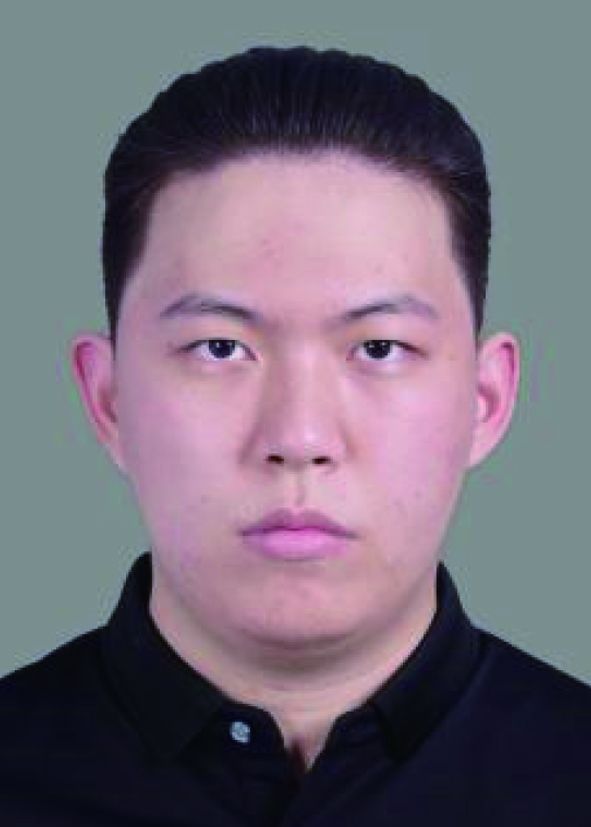 Mingrui Wang earned his bachelor's degree in 2021 from Wuhan University of Technology. He is currently a direct Ph.D. candidate at the School of Mechanical Engineering at the University of Auckland, where his research is centered on material identification and human-computer interaction based on triboelectric nanogenerators.
Mingrui Wang earned his bachelor's degree in 2021 from Wuhan University of Technology. He is currently a direct Ph.D. candidate at the School of Mechanical Engineering at the University of Auckland, where his research is centered on material identification and human-computer interaction based on triboelectric nanogenerators.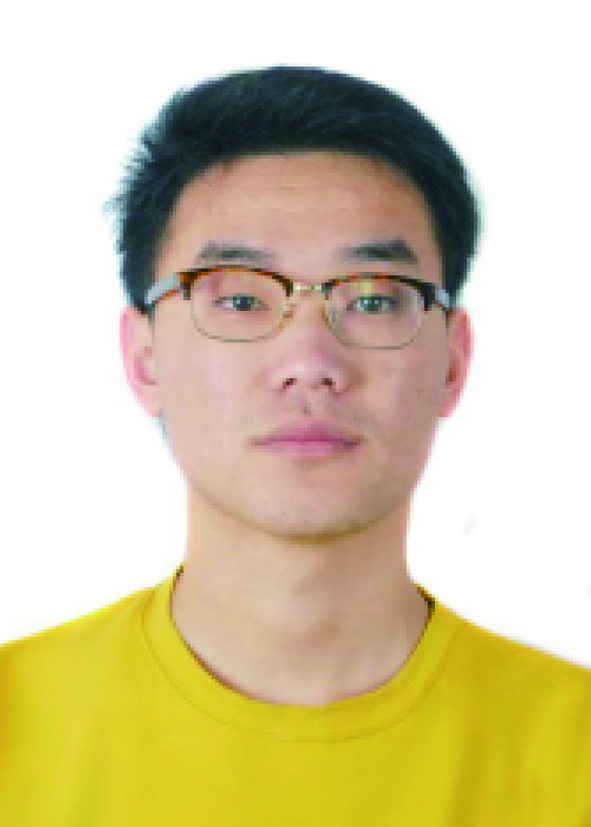 Yu Wang got his bachelor's degree in 2020 from Hangzhou Dianzi University. Now he is a master student at School of Integrated Circuit, Shandong University under the supervision of Prof. Kai Qian. His research focuses on manufacture and application of flexible magnetoelectric materials.
Yu Wang got his bachelor's degree in 2020 from Hangzhou Dianzi University. Now he is a master student at School of Integrated Circuit, Shandong University under the supervision of Prof. Kai Qian. His research focuses on manufacture and application of flexible magnetoelectric materials.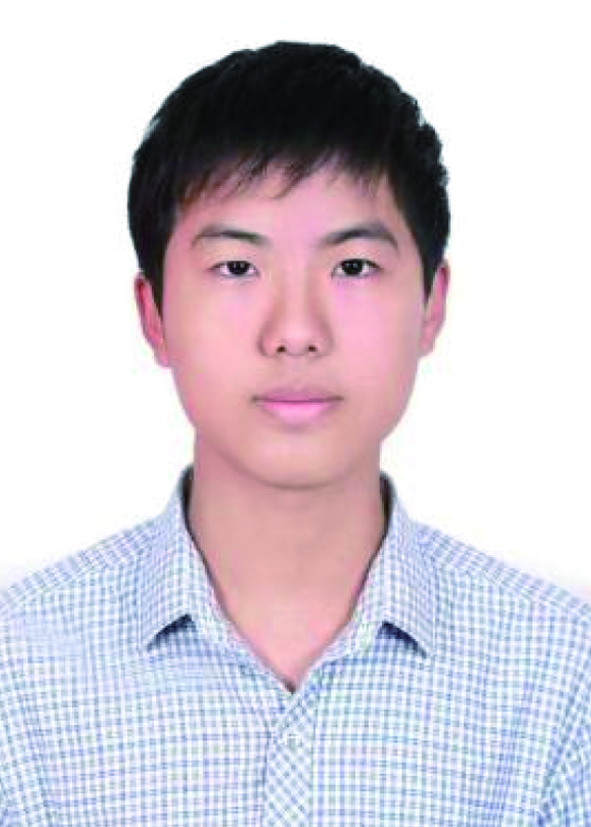 Zechuan Yu is currently an undergraduate student at the School of Integrated Circuits, Shandong University, under the guidance of Professor Kai Qian. His research interests are centered around human-computer interaction, with a particular focus on the development and application of flexible sensors.
Zechuan Yu is currently an undergraduate student at the School of Integrated Circuits, Shandong University, under the guidance of Professor Kai Qian. His research interests are centered around human-computer interaction, with a particular focus on the development and application of flexible sensors. Yan Li received his bachelor's and master's degrees from Shandong University. He completed his doctoral studies as a joint training program between Fudan University and Yale University. Currently, Yan Li is a deputy chief physician in the Department of Urology at Qilu Hospital of Shandong University, where he is engaged in interdisciplinary research combining medical and engineering approaches within the field of the urinary system.
Yan Li received his bachelor's and master's degrees from Shandong University. He completed his doctoral studies as a joint training program between Fudan University and Yale University. Currently, Yan Li is a deputy chief physician in the Department of Urology at Qilu Hospital of Shandong University, where he is engaged in interdisciplinary research combining medical and engineering approaches within the field of the urinary system. Weidong Qin received his bachelor's, master's, and doctoral degrees from Shandong University. He is currently a deputy chief physician in the Department of Critical Care Medicine at Qilu Hospital of Shandong University. His research focuses on inflammatory and immune-related diseases, as well as basic research on vascular pathologies.
Weidong Qin received his bachelor's, master's, and doctoral degrees from Shandong University. He is currently a deputy chief physician in the Department of Critical Care Medicine at Qilu Hospital of Shandong University. His research focuses on inflammatory and immune-related diseases, as well as basic research on vascular pathologies. Kai Qian graduated with a bachelor's degree in 2009 from Anhui University, and obtained his master's degree in 2012 from the University of Science and Technology of China. He completed his doctoral studies in 2017 at Nanyang Technological University in Singapore. Currently, Qian Kai serves as a professor and doctoral supervisor at the School of Integrated Circuit of Shandong University, where he is engaged in research on intelligent flexible "sense-compute-storage integrated" electronic devices.
Kai Qian graduated with a bachelor's degree in 2009 from Anhui University, and obtained his master's degree in 2012 from the University of Science and Technology of China. He completed his doctoral studies in 2017 at Nanyang Technological University in Singapore. Currently, Qian Kai serves as a professor and doctoral supervisor at the School of Integrated Circuit of Shandong University, where he is engaged in research on intelligent flexible "sense-compute-storage integrated" electronic devices.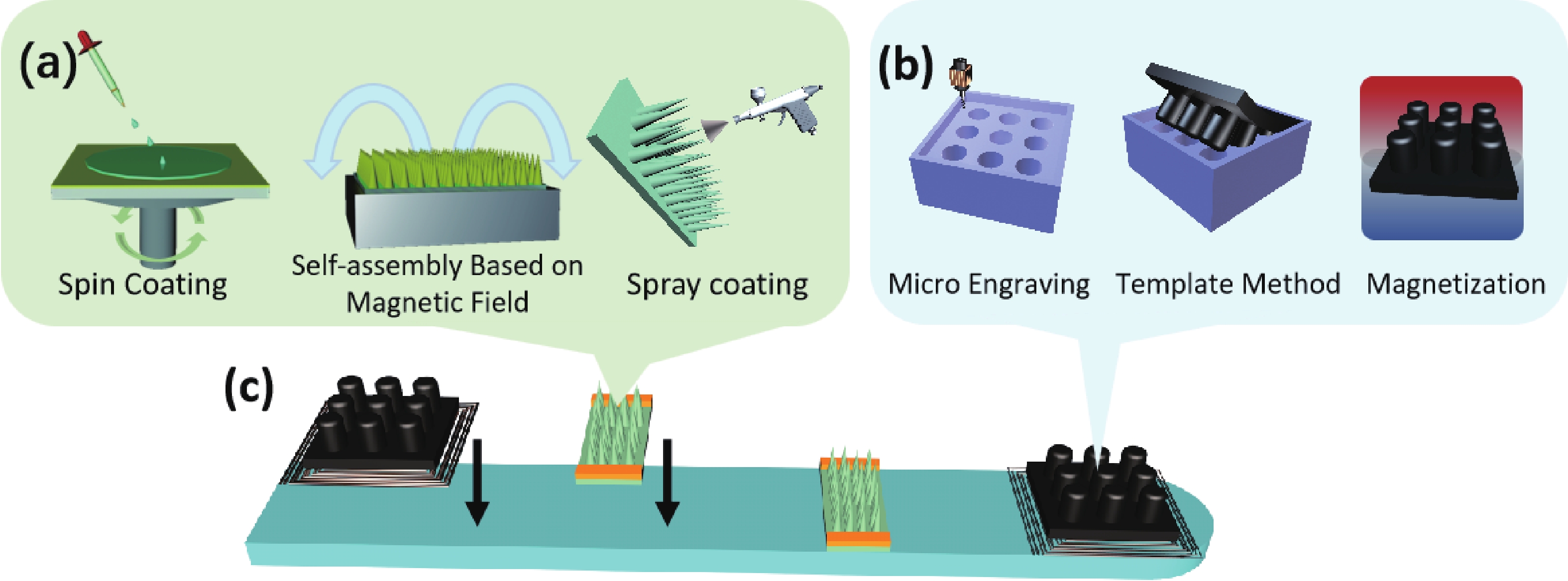
 DownLoad:
DownLoad:
